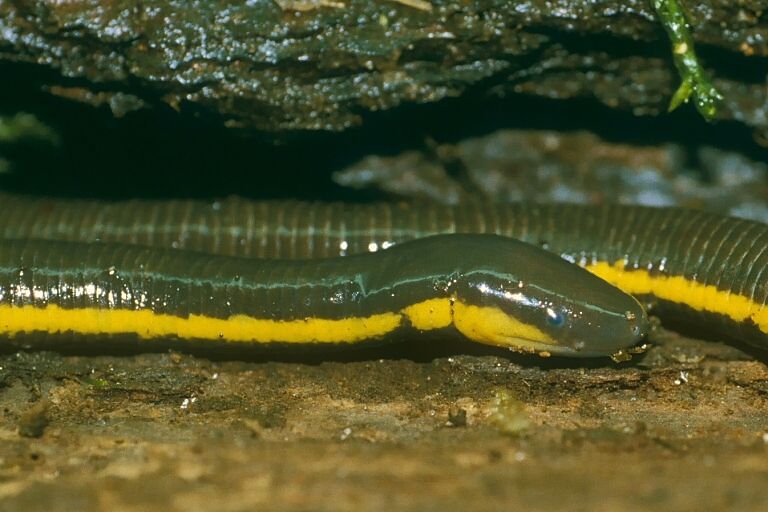| Citation |
|
Description |
Geographic Range [top]
Range Description: This species is known with certainty only from Kohtao Island, Thailand. However, the tradition has become to assign most striped caecilians from mainland Southeast Asia to this name, as mapped. The attributed range of this species is Peninsular and Mainland Thailand, southeastern Myanmar, Lao Peoples Democratic Republic, Cambodia and Viet Nam. However, this requires further examination, and the taxonomy might be faulty. Specimens from Yunnan in China are attributed here to Ichthyophis bannanicus.
Countries occurrence:
Native:
Cambodia; Lao Peoples Democratic Republic; Myanmar; Thailand; Viet Nam
Additional data:
Range Map: Click here to open the map viewer and explore range.
Population [top]
Population: There are places within its range where it appears to be locally abundant. In the Mekong Valley, Thailand, individuals have been recorded at low densities (median 0.08 individuals/m²) (Kupfer et al. 2005).
Current Population Trend: Unknown
Additional data:
? Population severely fragmented: No
Habitat and Ecology [top]
Habitat and Ecology: It is known to inhabit evergreen forest and streamside gallery forest, as well as agricultural lands and urban areas. A population of Ichthyophis cf. kohtaoensis from the Mekong valley, northeastern Thailand, was found in various terrestrial macrohabitats including open scrubs, gallery forests and open secondary forests. In the dry season, individuals of this population were found mainly in soil but in the rainy season they were also detected in leaf litter or rotten vegetation (Kupfer et al. 2005). This is an oviparous species with terrestrial eggs and aquatic larvae in forest streams and pools. The clutch size for the population from the Mekong Valley ranges from 32-58 eggs (Kupfer et al. 2006). It is considered to be an adaptable species.
Systems: Terrestrial; Freshwater
Use and Trade [top]
Use and Trade: There are no reports of this species being utilized.
Threats [top]
Major Threat(s): It is an adaptable species that is unlikely to be facing any significant threats.
Conservation Actions [top]
Conservation Actions: It occurs in many protected areas.
Citation: van Dijk, P.P., Wilkinson, M., Gower, D. & Kupfer, A. 2009. Ichthyophis kohtaoensis. The IUCN Red List of Threatened Species 2009: e.T59623A11970469. http://dx.doi.org/10.2305/IUCN.UK.2004.RLTS.T59623A11970469.en. Downloaded on 19 July 2016.
Disclaimer: To make use of this information, please check the .
Feedback: If you see any errors or have any questions or suggestions on what is shown on this page, please provide us with feedback so that we can correct or extend the information provided
|

